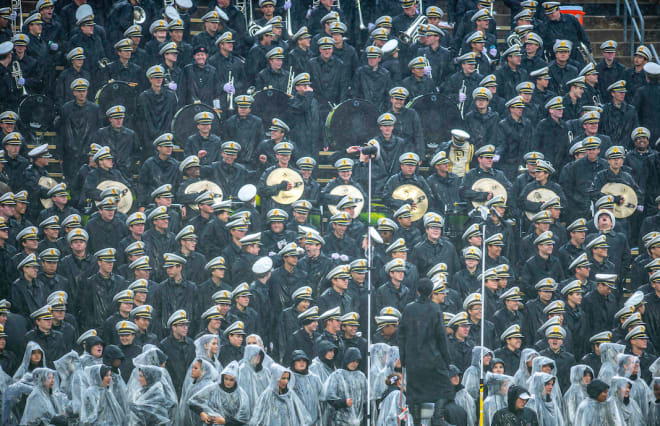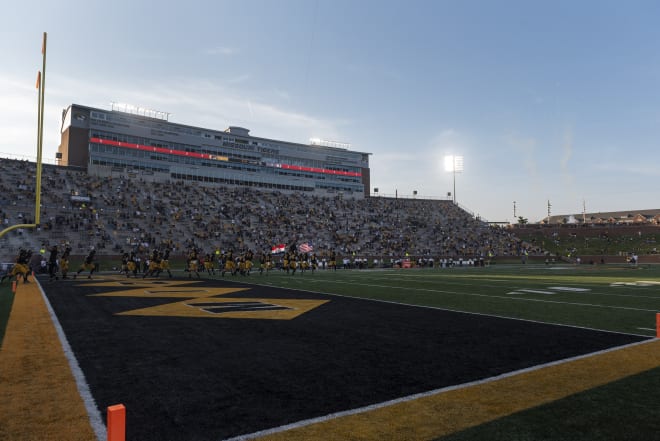Brohm no fan of Big Ten fan ban: 'I wish we had some people in the stands'


The crazy student sections, wild fans and wailing marching bands that make college football Saturdays special won't be part of the Big Ten landscape in 2020 as the nation continues to battle the COVID-19 pandemic. And Purdue coach Jeff Brohm doesn't like it.
"Well, I'm one of these guys, I wish we had some people in the stands," said Brohm, "whether it's home or away. Even if it’s 20 percent capacity. But I don’t think that’s going to happen, at least to start off."
Fans won't even be able to congregate around Ross-Ade Stadium for home games during a season which begins Oct. 24. According to Purdue President Mitch Daniels, Ross-Ade Stadium parking lots will be blocked off on game days.
Who will be allowed into Ross-Ade--and other Big Ten stadiums--on Saturdays? Only family members of players and coaches. The absence of loud and proud fans will create a quiet atmosphere on Saturdays.
"So, it's gonna be different," said Brohm. "It's gonna be more of a scrimmage setting, as far as not having the noise and not having that extra pop to bring to the atmosphere. So, I don't particularly like it, but that's what we're dealt with."
The SEC, ACC and Big 12--Power Five conference peers of the Big Ten that already are playing--are permitting fans. But fellow Power Five member the Pac-12, which won't start until Nov. 6, is following the no-fan plan of the Big Ten.
The SEC left decisions about fan attendance up to its 14 member institutions. There were no requirements to cap attendance at a certain percentage of stadium capacity. Instead, the SEC allowed schools to determine how many fans can attend games by using state and local guidelines. Every SEC school followed that advice by establishing plans to cap attendance at well under 50 percent of stadium capacity.
Last Saturday, the first day of SEC games in 2020, saw attendances vary from 24,073 at the Vanderbilt at Texas A&M's game (23 percent capacity at 102,733-seat Kyle Field) to 11,738 for the Alabama at Missouri tilt (16 percent capacity at 71,168-seat Memorial Stadium).
Notre Dame--located roughly 120 miles from Purdue and playing in the ACC this season--has capped capacity at 12 percent for its home games in 80,795-seat Notre Dame Stadium, having 10,097 for a home game vs. Duke and 10,085 for a home tilt vs. USF in 2020.
Story continues below photo

Perhaps the Big Ten will reconsider its no-fan policy as the season progresses. But for now, Brohm and his Big Ten peers must deal with a situation that could present some issues from an emotional/motivational standpoint.
"You've got to find a way to get your team up, ready to play at home, especially now, because you're not going to have the crowd behind it," said Brohm. "So, I think, to me, probably playing at home with not anyone there could be a little tougher because you've got to go above and beyond to make sure that you're bringing the energy because you're not going to get it from the stands."
Brohm's squad fed off the energy of the 60,716 fans in Ross-Ade Stadium during the signature win of his Purdue tenure back in 2018, when the Boilermakers throttled No. 2 Ohio State 49-20. Would the win have been as lopsided--or possible--without the Boilermakers being fueled by a frenzied home crowd?
Back in June, Daniels announced that Purdue could have as many as 15,000 fans at home games in 2020, which is roughly 25 percent capacity for 57,236-seat Ross-Ade Stadium. The Boilermakers averaged 54,021 fans for seven home games in 2019. But plans to allow fans subsequently were squashed by the Big Ten.
“Our primary objective, obviously, is get the game played,” Ohio State athletic director Gene Smith told reporters the day the Big Ten announced it would play a nine-game schedule last month. “I agree with the medical task force and their recommendation. Let’s see how the games emerge over time.”
If the Big Ten opts to loosen attendance restrictions, Purdue would resume discussions with the Tippecanoe County Health Department--which would have to approve any Purdue plan--about Ross-Ade attendance.
In the meantime, Brohm is left trying to get his team fired up without the help of a partisan crowd. It could be a challenge for Brohm, who will face empty stands for the first time on Oct. 24 when the Boilermakers open the 2020 season in West Lafayette vs. Iowa.
"That's something that we're going to have to make sure we're aware of, we're conscious of, that for our home games, we're ready to play," said Brohm. "You see in the NFL. On TV, I don't think (you) probably realize maybe how quiet it is because they pipe in that sound on TV. But you've got to get yourself up and ready to go, and it's something that we're going to be very conscious and aware of."
Membership Info: Sign up for GoldandBlack.com now | Why join? | Questions?
Follow GoldandBlack.com: Twitter | Facebook | YouTube
More: Gold and Black Illustrated/Gold and Black Express | Subscribe to our podcast
Copyright, Boilers, Inc. 2020. All Rights Reserved. Reproducing or using editorial or graphical content, in whole or in part, without permission, is strictly prohibited.
